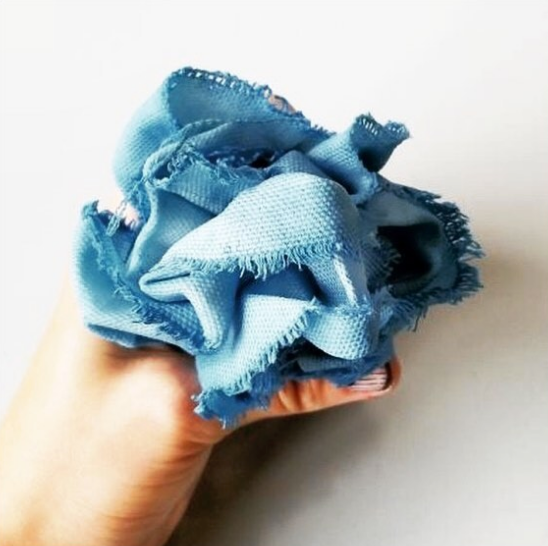(This post is Part 2 of an interview with natural dyes expert Amy Taylor. Amy dyed all our indigo bags by hand, and in this interview we discuss her perspectives on the history and future of natural dyes. Read Part 1)

A stack of Amy's dyed samples for this project early in the process
Arielle: Such an important aspect of natural dye is the sustainability/environmental aspect of it; do you think there’s a future in the fashion industry for natural dyes?
Amy: I absolutely think there's a future in the fashion industry for natural dyes. The textile industry as a whole is one of the earth's biggest polluters, due in large part to the fast-fashion business model of disposable textiles. Luckily, I think people are working really hard to understand where their fashion is coming from and what impact it has on our planet, and they are starting to support artists who work with natural materials. There are definitely hurdles that exist in making natural dyes as prevalent in our future as they once were, but there are a lot of creative and engaged people taking notable steps to re-incorporate natural dyes into our day-to-day fashion.
Fabric in Amy's studio dyed for The Materials Design Co.
Arielle: I think that's very true. One of the goals of The Materials Design Co. is to support artists, particularly textile artists, who can help us make beautiful collections with lower environmental impact. We used all indigo for this first collection, and I think indigo is a great place to start the learning process. What makes indigo such a great dye?
Amy: I love this question, this is also a very big question. Indigo is the only natural blue dye that exists in our world. Denim is still dyed with synthetic indigo, there's just nothing else like it. In addition to yielding extraordinary blues, the chemistry behind the indigo vat is totally different than all other dyes and can exist for years with proper care and attention. One of the oldest known pieces of fabric with traces of indigo dates back to over 6,200 years old in Peru. This means somehow people understood indigo's awesome chemistry long before even writing was developed. Indigo plants have existed all over the world in vastly different climates for thousands of years, and each region figured out how to produce and maintain the dye independently of each other. It is absolutely astounding in the best way that humans have always been drawn to this color and this dye, and have gone to great lengths to keep the practice, and their vats alive.
Arielle: That's pretty incredible, especially since indigo originates from leaves rather than something obviously colorful like berries or flowers. What's something else most people don't know about indigo?
Amy: Something I think that people don't know about it is that it is activated by oxygen! When we first pull the fabric from the vats, the color comes out looking yellow-to-green (depending on the type of indigo vat) and we watch the fabric turn to blue before our eyes. It's really magical to watch and experience, and I highly recommend people learn more about the different ways that people are still using indigo around the world.
 Amy's indigo dyed panels in our Limited Edition totes
Amy's indigo dyed panels in our Limited Edition totes
Part 2 of 2 - An interview with Amy Taylor for The Materials Culture Blog
Find Amy Taylor on Instagram at @msamytaylor and see more of her work at www.msamytaylor.com.


